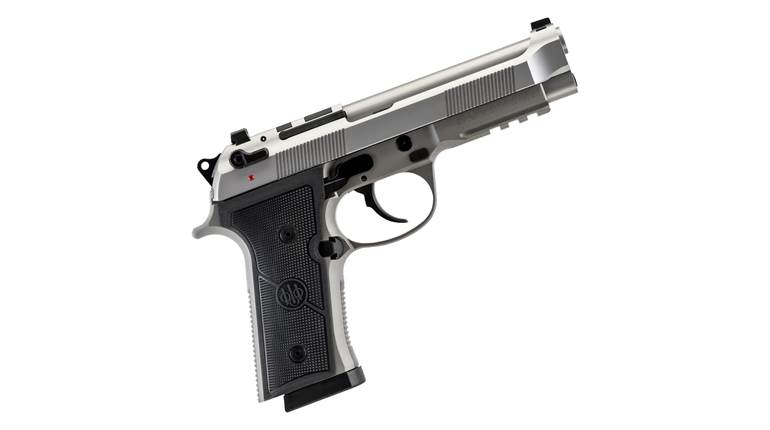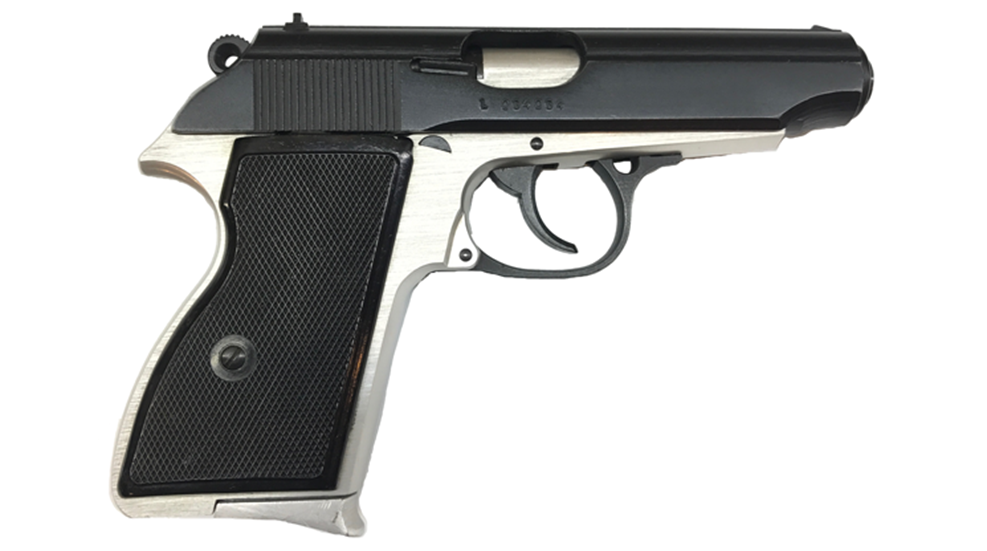
In today’s world of concealable handguns, those looking for similar functionality to that of higher-priced double-action pistols without a huge price tag, the Hungarian-made FEG PA-63 is an option to consider. 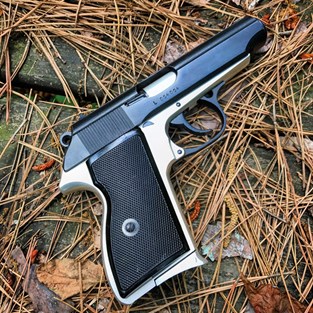
The PA-63 is a compact handgun that is immediately recognizable to most gun enthusiasts. Still, some may mistakenly pick it up, strike a pose, and make a generic James Bond quote thinking that it is a Walther Polizei Pistole Kriminalmodell or simply PPK. This error is understandable. Both are virtually identical in outline, with the PA-63 mimicking many of the same attributes of the PPK. It features the same blowback action with the barrel fixed into the receiver while functioning as the guide rod for the recoil spring. Both use a single-stack magazine, feature an exposed hammer, and a double-single/action trigger that is de-cocked by rolling down the safety lever. The PA-63 lacks a manual slide catch and field strips the same as with the PPK.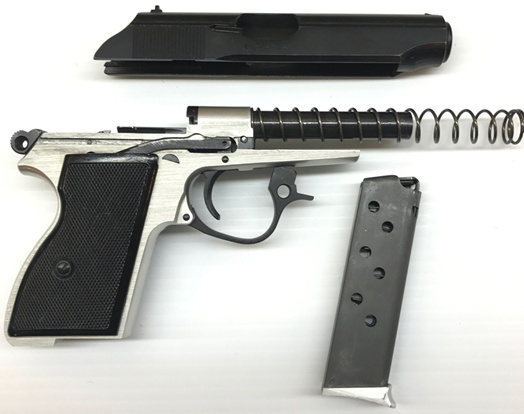
Where the PA-63 differs from the PPK is in its less costly construction. Instead of using an all steel frame like the original Walther, the PA-63’s frame is made from aluminum alloy. Other differences include simplified parts for the ease of mass production that lack the extra craftsmanship and tighter tolerances of a Walther. These traits come from the PA-63s development by Fegyver- és Gázkészülékgyár (gun and gas appliance factory), or FEG, in Budapest as an economical service pistol option for the Hungarian military and police during the Cold War.
FEG, renamed FEGARMY after the fall of the Iron Curtain, had a prior history producing PPK clones starting with the Model 48 during the 1940s (later FEG also made Browning High Power clones). With the inclusion of Hungary as a satellite state of the Soviet Union following the end of World War II, the nation sought a service pistol for its military and police that would utilize the common Communist Bloc pistol cartridge, the 9x18 mm Makarov. Instead of adopting a contemporary Soviet design, the Hungarians opted for a domestically produced handgun that would be inexpensive to produce while still being reliable. Thus, FEG made slight changes to the design of its previous PPK clones during the 1950s, resulting in the PA-63. This new handgun boasted the reliability of the tried Walther design without the durability of all-steel construction, and the PA-63s were widely used as the standard sidearm of the Hungarian military and police up to the 1990s. After the collapse of the Soviet Union, the PA-63 was one of many mass produced Communist Bloc guns imported into the United States as surplus and even new manufacture.
Today the PA-63 can be found for $250 to $300, making it an affordable concealed-carry option when compared to other guns with similar features. For this article, a friend allowed me to live with his PA-63 for a couple of weeks in exchange for a tune-up. During this time, I became familiar with its dimension, design, and handling. The small single-stack frame allows the PA-63 to fit into pockets or be tucked away inside the waistband with relative ease and, more importantly, without being too noticeable. Despite the small size, it does not feel too small in the grip. Its grip has a thumb rest on the left side, and its magazine floorplate includes a built-in pinky extension, both of which result in a comfortable fit into the user’s hands. The rounded snag-free features inherent in the PPK design, like the small iron sights, are advantages for use as a concealed carry. Its magazine capacity of seven rounds is noteworthy for a handgun in the size category. The nature of the barrel being fixed into the lower frame results in better control and accuracy than in a locked breach design where the barrel pitches and moves as a functioning part of the action.
Probably the most desirable feature of the PA-63 as a concealed-carry handgun is its single-action/double-action with the safety lever doubling as the de-cocker. This gives the user the choice of carrying the handgun with a round in the chamber with the hammer down or with the safety either on or off with a double-action first shot. This is not an understatement, as the double-action trigger pull of the stock PA-63 is almost enough to require a fist clench. At 16 lbs., the double-action will require a strong pull of the trigger to fire or two hands to cock the hammer back. Yet, after this rough double-action trigger pull follows a smooth single-action trigger pull for the remainder of the rounds in the magazine. The single-action trigger pull is quite pleasant with a relatively short reset, a superb feature especially on a less expensive handgun.
While FEG produced other variations of the PA-63 chambered in .32 ACP and .380 ACP, the most common version is in 9x18 mm Makarov. Despite complaints by some that 9x18 mm is inferior in its power compared to the widely used and popular 9x19 mm Luger, the Makarov cartridge typically has more energy than a .380 ACP and is still a viable self-defense cartridge for a concealed-carry handgun.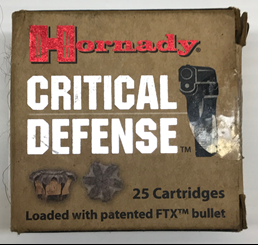
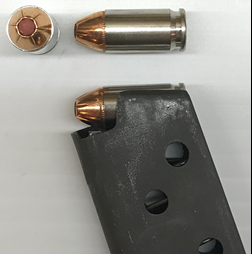
A benefit of the 9x18 mm Makarov cartridge in a small-frame handgun like the PA-63 is that it is slightly more controllable. Like 9 mm Luger, 9x18 mm Makarov ammunition is also fairly easy to find for both target and self-defense ammunition, available from steel-case target loads to premium 95-gr. +P hollow-points made by Hornady.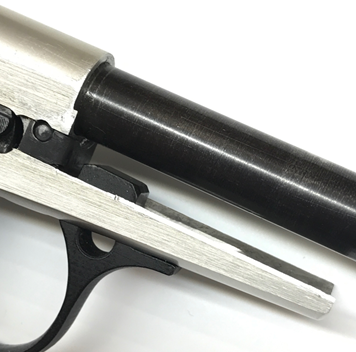
The PA-63 is not without its drawbacks, though. These issues include the use of a lightweight aluminum alloy frame and the settings of the factory springs. The use of an aluminum alloy frame instead of steel, like on the Walther PPK, was intended to help reduce the overall cost of production. This feature is a double-edged sword in that it can translate into a shorter service life versus steel construction.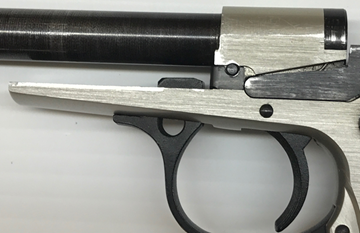
The use of an aluminum frame leads to reduced overall weight compared with a steel gun. That’s good for carrying but, especially with 9x18 mm +P ammunition, the PA-63 can potentially be too uncomfortable to shoot repeatedly for someone with smaller or weaker hands in its factory configuration. This is especially the case for those who may not be well versed in grip discipline or suffer from arthritis.
The final drawback of the PA-63 is its factory recoil, hammer, and magazine springs. The factory recoil spring of 11 lbs. is light enough for an easy slide pull, but contributes to the sharp recoil of standard ammunition and was not intended to absorb the extra shock of shooting +P.
The factory hammer spring of 16 lbs. is directly to blame for one of the biggest complaints about the handgun—the double-action trigger pull. The double-action pull was designed to be so stiff as a safety feature to allow the gun to be left off safe with a round in the chamber. This is similar in concept to the de-cocking feature of the Beretta M9. While it may not be any more than an annoyance for someone with normal finger strength, it may prove difficult for some.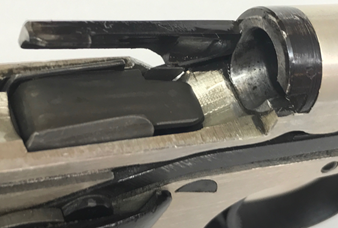
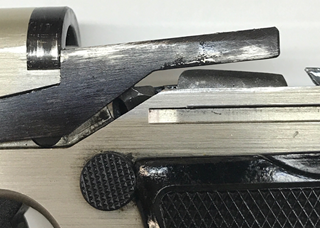
The magazine spring is not always a drawback, depending on the condition of the spring in each handgun. For example, the PA-63 used for this article had an issue with the slide not locking back after the last round. It appeared this was due to a bent lip on the magazine follower. The lip of the magazine follower is constructed from stamped sheet metal and was bent inward, away from the slide catch lever. This was easily fixed by bending out the follower lip. After this fix however, the issue continued, indicating a weak magazine spring.
Luckily, there are aftermarket replacement recoil, hammer, and magazine springs offered by Wolff Gunsprings. Each one of these options offers better handling, user friendliness, and reliability for tuning the PA-63 to the user’s preferences. The first is the recoil spring, which directly correlates to the felt recoil and reliability with +P ammunition. The stock recoil spring is set at 11 lbs., which is adequate for shooting standard steel cased ball ammunition. Obviously, most who look into this handgun for self-defense purposes will prefer having it loaded with +P hollow points rather than target ammunition.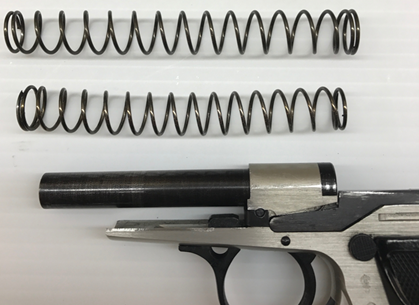
Wolff offers 13- and 15-lb. recoil spring options to enhance reliability with +P ammunition and to help reduce some of the felt recoil. The 15-lb. spring offers superior reduction of felt recoil and makes the impulse fairly light in comparison to the 11-lb. stock spring. However, it drastically increases the amount of force needed to pull back the slide. This makes charging more of a hassle. For this reason, the 13-lb. spring is recommended in that it reduces felt recoil without drastically increasing the amount of force needed to pull the slide. The recoil spring is easily interchanged as it fits over the barrel with its own tension. It is recommended to turn the action spring in the direction counter to the coil when removing it to loosen the tension against the barrel and prevent scratches.
The hammer-spring options are the most sought after spring upgrade for this handgun. In my case, they were the only one of the spring sets for the PA-63 placed on backorder. The purpose of these replacement hammer springs is to tame and tune the horrid double-action trigger pull. Wolff offers three different calibrations at 9-, 11-, and 13-lbs. versus the pull of the 16-lb. factory spring. The 9-lb. spring would appear to be the most desirable in that it will result in the lightest single- and double-action pulls. Many who have installed it however, noted that they experienced light primer strikes and failures to discharge when using steel-cased ammunition. The 11-lb. spring is the option that many go with in order to get the lowest pull weight while avoiding light primer strikes.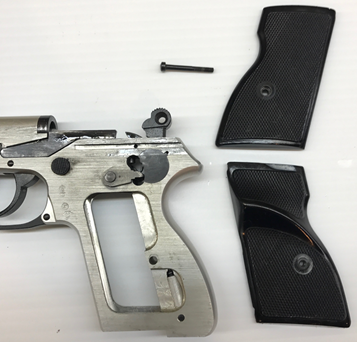
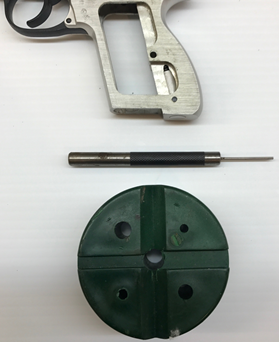
Replacing the factory hammer spring requires more work than the magazine or action springs in that it requires removing the spring plunger from the bottom of the frame, which is retained by a pin. The stocks must first be unscrewed to access the plunger-retaining pin located at the bottom rear of the grip frame. For this task a punch, hammer, and armorer’s block are required to remove the plunger-retaining pin. Before starting, it is important to have the hammer forward in order to relieve spring tension. Nevertheless, there will still be spring tension, so removing the retaining pin requires simultaneously maintaining pressure on the plunger while tapping out the retaining pin. Failure to do so will result in the plunger and spring flying off into the room. The hammer spring rides along a guide rod connected directly to the hammer. Thus, the replacement spring must be installed onto the guide rod to function properly. Once the hammer spring is installed, reinstalling the plunger and carefully driving the retaining pin back into its hole completes the job.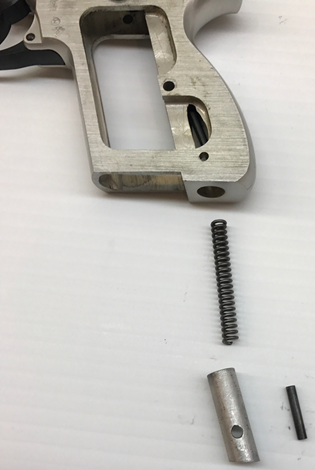
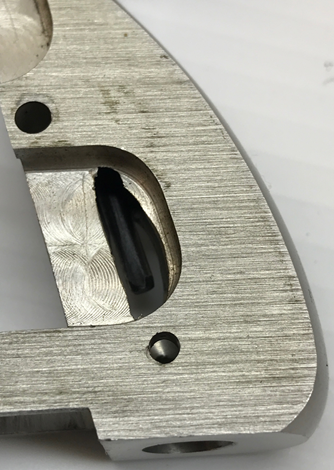
Before moving on, a quick note about the risk of accidental discharge after changing out the factory hammer spring. As discussed earlier, the 16-lb. hammer spring was designed to allow the handgun to be left off safe in double-action with a round chambered. Though the 11-lb. hammer spring option is lighter than the factory spring, it is unlikely that an accidental discharge in double-action with the 11-lb. spring installed will happen under normal circumstances.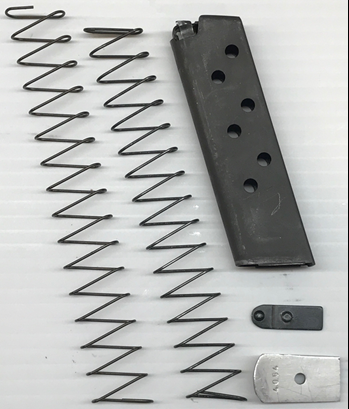
The final spring set is an increased power magazine spring to address potential issues with the magazine. Wolff offers just one variety of this spring at 10 percent increased power. As Wolff states, this is purely to address possible issues with weak or broken PA-63 magazine springs that result in feed or lock-back issues. It proved to be a worthwhile upgrade. Replacing this spring is fairly straightforward and similar to other pistol magazines. First, it requires removing the floorplate. Doing this involves pushing a punch up through a hole in the floorplate to free it from the retaining tab. Once this is done, the floorplate slides off with the retainer, spring and follower falling out of the bottom freely. It is important to remember while reassembling the magazine to have the tab facing downward so that it can properly interface with the floorplate.
All three of these spring upgrades made a noticeable improvement in the performance and reliability of the PA-63 I used for this article. The upgrades to the recoil and hammer springs are a no-brainer upgrade to this handgun at a price of a whopping $12.18, with an additional $7.49 should you choose to go with the magazine-spring upgrade as well. This is not bad at all, especially when compared to upgrades such as those for Smith & Wesson or Glock handguns where you could expect to drop an extra $150 to $300 for a trigger upgrade.
Despite the drawbacks of its lighter construction versus the original Walther design from which it was derived, the Hungarian FEG PA-63 is an affordable and reliable option for those who do not want to spend money on an actual Walther PPK or other premium pocket gun. As a less expensive option, it is a handgun that is better suited to the wear and tear of regular concealed carry versus a premium pocket gun. That is not to say that it is necessarily an equal to the more expensive options out there. But with $30 worth of upgrades, this $250 surplus pocket gun is well worth the money.














